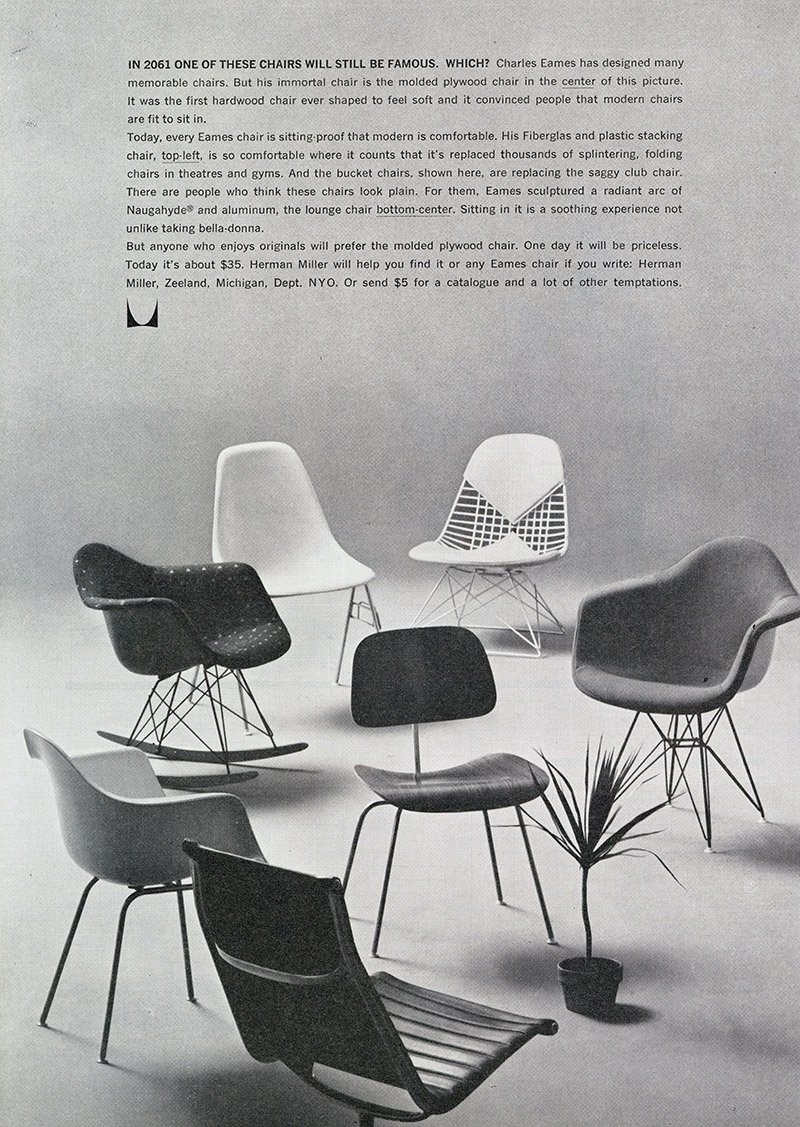Ray and Charles Eames released their molded fiberglass armchair in 1950, after creating it for the International Competition for Low-Cost Furniture Design, sponsored by the MoMA. The affordable fiberglass design was an answer to the limited financial and material resources available after WWII.
In its earliest form, this chair was molded plastic on an aluminum base, upholstered with fabric cushions. Eventually, the style expanded to offer a variety of finishes, bases, and upholstery options. They became hugely popular, appearing everywhere from sports stadiums to college lounges.
original Eames ad



